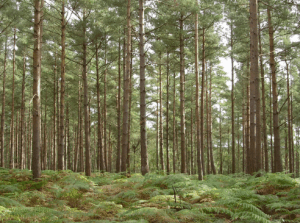
We have recently talked at some length in previous articles about wood burning stoves, and their credentials as an environmentally friendly heating source, including how a rise in CO2 could be helping to increase tree growth.
One of the reasons why they are environmental friendly is in part, due to the fact that wood is a sustainable fuel source, and if managed correctly, can grow at a quicker rate than it is being consumed thanks to sustainable woodlands and forests.
.
.
Managing Woodlands & Forests
Effective management of sustainable woodlands and forests is essential if they are to continue to prosper and grow in coming years. Managed woodlands are like a garden and needs constant maintenance. It is a careful job where trees are thinned to grow, and things like bramble are carefully managed to ensure they don’t dominate other plants.
European Guidelines on Forrest and Woodland Management:
European countries have agreed upon 6 criteria points for sustainable forrest and woodland management, which are outlined below. These points are key in helping ensure woodlands and forests provide among many other things, a sustainable fuel source.
Maintenance and appropriate enhancement of forest resources and their contribution to global carbon cycle
Maintenance of forest ecosystems health and vitality
Maintenance and encouragement of productive functions of forests (wood and non-wood)
Maintenance, conservation and appropriate enhancement of biological diversity in forest ecosystems
Maintenance, conservation and appropriate enhancement of protective functions in forest management (notably soil and water)
Maintenance of other socio-economic functions and conditions
To ensure woodlands and forests continue to supply wood, it is vital that they are cared for and developed. These points above help create the awareness and focus that is needed for a sustainable woodland.
Sustainable Woodland and Forest Key Facts:
- Forests cover over 30% of the planets land area
- Forests contain most of the world’s biodiversity and almost as much carbon as in the atmosphere
- Directly and indirectly forests and woodlands provide livelihoods for over one billion people
- Deforestation affected around 13 million hectares per year between 2000 and 2010. However, afforestation and natural expansion the net forest, loss was actually 5.2 million hectares per year
- Forests influence the availability of water, regulates surface and groundwater flows, and also helps maintain high water quality
- Forests and trees reduce water-related risks such as landslides, floods and droughts
Other Charlton & Jenrick Resources Related to Wood Burning:
CO2 and The Rise in Tree Growth
New Wood Burning Stove Laws
Stoves & Lower Emissions
What Wood To Burn








